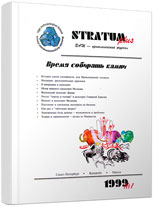Эпиграветт или постграветт? Особенности кремневого инвентаря поздневалдайских памятников с мамонтовым хозяйством
Epigravettian or Postgravettian? Characteristics of flint inventories of the Late Valdai sites with mammoth economic
Author(s): Sergey N. LisitsynSubject(s): History, Archaeology
Published by: Издательский дом Stratum, Университет «Высшая антропологическая школа»
Summary/Abstract: There is a number of Upper Palaeolithic sites located in the glacial area of the Central Russian Plain, including the upper Dnieper, Volga and Don basins. This investigation deals with typological classification of flint inventories of the sites dated to postgravettian period. There two chronological groups or stages were segregated. At the first stage, related to upper limit of Valdai cold maximum phase, the assemblages comprised tools made on quite a large-scale blade blanks. Besides common samples these included a series of backed points on blades in some cases with bases transversely retouched; backed microblades with naturally pointed ends or occasionally pointed with retouch. Blank truncation and the latter retouching as well as ventral faceting was widely used. Among burins’ and points’ ends forms prevail notched transversal and skewed ones. At the second stage most tools were made of moderate blades and bladeletts. Backed points’ blanks were mainly microblades. The group of backed microblades includes a series of items with transversely retouched ends, either one or both. Points and burins were manufactured on natural row ends of blanks and they often had archwise oblique contours of retouched pieces. Ventral treatment of tools occurred seldom. Accordingly, the dynamics of the Late Valdai assemblage development shows hasty loss of Gravettian traditions, decrease of blanks dimensions and simplification of tools treatment methods. Hense, the term “epigravettian” as a cultural phenomenon, apparently can’t be presently considered. The only phenomenon to be discussed is chronological progression of gravettian and postgravettian assamblages, as the cultural succession and gradual development is not confirmed. Postgravettian assemblages had their own evolution, including two stages. The Late Valdai epoch in the Central Russian Plain was characterized of disappearance of Gravettian traditions chiefly in flint inventories but less in art. The origin of Postgravettian assemblages remount to Valdai cold maximum phase that separates two archaeological epochs.
Journal: Stratum plus. Археология и культурная антропология
- Issue Year: 1999
- Issue No: 1
- Page Range: 83-120
- Page Count: 38
- Language: Russian

